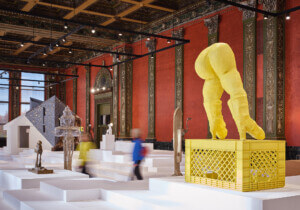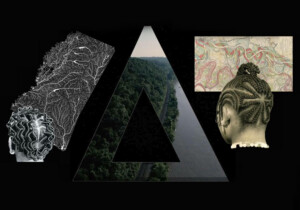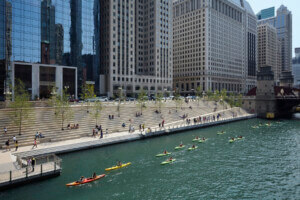This is a preview of our September issue, out tomorrow.
What happened to speculation in architecture?
At a recent symposium at the Yale School of Architecture titled “Aesthetic Activism,” Dean of the Syracuse School of Architecture Michael Speaks noted that curiously, architecture has lost its penchant for speculation in recent years. He cited the two most recent Venice Biennales as evidence of this trend, as the curators chose to look at the elements of building (Rem Koolhaas’s Elements, 2014) and reporting on reality in regions beyond what the Biennale had traditionally addressed (Alejandro Aravena’s Reporting from the Front, 2016). He also discussed the Chicago Biennial in 2015, which arguably focused on practice, rather than architecture.
What happened to architecture’s ability to speculate on the world around us, as was the ordinary in the 20th century, from Le Corbusier and the modernists to Archigram and the radical architects of the 1960s and 1970s?
In the latest issue of The Architect’s Newspaper (AN), we set out to survey the state of architectural speculation today. AN Contributing Editor Sam Lubell will be opening the exhibition Never Built New York, which features proposals that were never realized. You could say that looking at the history of unbuilt architecture is speculation. So we set out to find what might be in the Never Built exhibition of 2050. What is speculation today?
We found that in architecture, most speculation is more like plausible futures. It is being developed by private industry in some cases, well within the realm of possibility. Many think that self-driving cars are a revolutionary technology, and are a matter of “when,” not “if.” But why have so few architects gotten out in front of this technology looking for opportunities to change the city? Solar technologies, like those being developed at Tesla, would also have the potential to radically change how we build.
Our research confirms that in many ways Speaks is correct in his thinking about a lack of speculation. Architects are not really thinking much about new ways of living and relating to the world outside of our own history and discourse. I would argue that the upcoming Chicago Biennial appears to confirm this idea.
We did manage to find an interesting mélange of projects that project toward that future. From automation and smart cities, to floating islands (front page), there are some plausible futures that might be very real someday. So it is not necessarily speculation, but just futurist realism, which we found to be a fruitful endeavor.
In an interview with Amelie Klein of the Vitra Design Museum about her exhibition as part of the Vienna Biennale, she reported that many of the most speculative work in architecture that she has come across is actually happening in the realm of construction, such as the algorithms used by Achim Menges at the University of Stuttgart, Institute for Computational Design, to minimize material use and create new ways of making.
While the discipline might be struggling to imagine new ways of living, it is not a boring time for architecture. The world around us is changing quickly, and we can see several new futures simultaneously developing before our eyes. It may not be about predicting or producing new futures, but about reflecting on the present and what plausible near futures could be on the horizon and how they will affect our cities.










